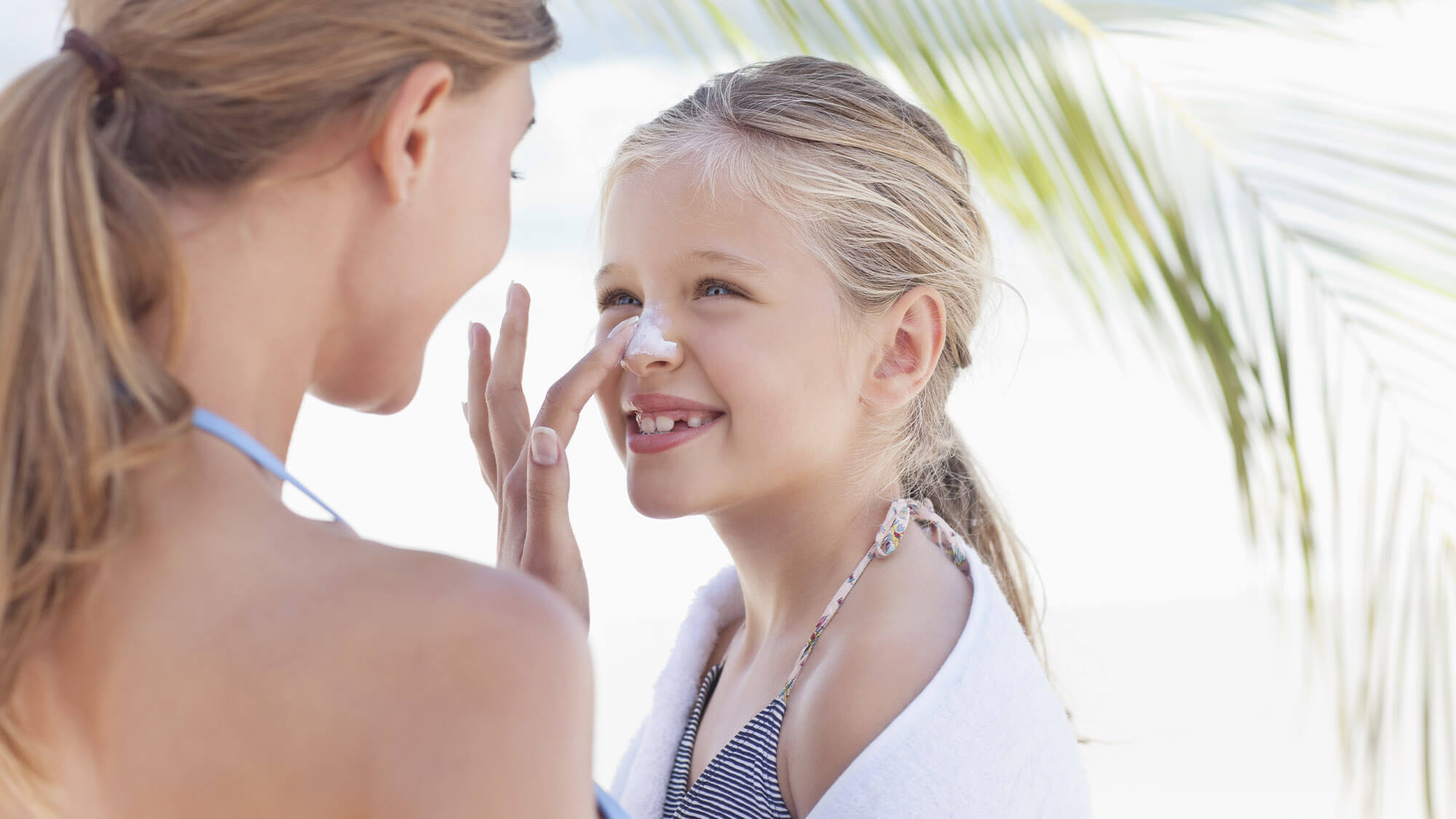Sunbathing is a part of summer and tanned skin is a souvenir we bring back from our holidays. However, t as you know exposure to the sun must be done wisely and in moderation. Sunscreens, be it in the form of a cream or lotion are part of the basic equipment of those who nurture a good relationship with their skin. When you’re in front of the store shelves however, do you know which one to choose? Listed below we will go through what you need to know and attempt to answer this question.

Why do you need to cover your skin?
First of all, because sunburn can occur in less than ten minutes of exposure and cause you to suffer for two days.
Secondly, because the long-term consequences can be much more serious. Some damage is aesthetic: premature ageing of the skin, depigmentation or dark spots, etc. In other words, the opposite of the effect sought with seasonal tanning.
Even more importantly, the risk of skin cancer must be taken very seriously. It concerns all skin types, even those used to the sun or naturally tanned. The culprits are UVA rays, which penetrate obstacles (sunshades, clouds, etc.) and penetrate deeper into the dermis. In Luxembourg, skin cancer is the most common form of cancer, with over 500 new cases per year.
There is no need to choose between protection and tanning. Sunscreen does not prevent you from getting a tan, quite the contrary. A gradual tan is more likely to last over time than one obtained by repeated sunburn.
The characteristics of a good sunscreen
When choosing a sunscreen, make sure it has certain qualities:
- Broad-spectrum protection, against UVB and UVA (this is normally the case, but it is worth checking)
- An index of at least SPF 30 or 50
- Free of ingredients that are
hazardous to health such as:
- Parabens, preservatives that are also endocrine disruptors and go by the sweet names of metylparaben, butylparaben, ethylparaben, isobutylparaben or propylparaben.
- Retinyl palmitate (or vitamin A palmitate), an antioxidant labelled as a carcinogen
- Benzophenones make the cream more transparent but also have toxic effects. These are known as oxybenzone, BP-1, BP-2, BP-3 or BZ-3, Escalol 567, Uvinul M40, Uvasorb Met, ethylhexyl methoxycinnate or oxtionoxate.
Two types of sunscreens
There are two types of sunscreens, depending on the type of protective barrier they use:
- chemical filters absorb UV rays instead of the skin. They are controversial because of the damage they cause to corals. Hawaii has banned them to protect its marine ecosystem. Recently, many brands are adapting their composition and working in partnership with environmental associations to reduce the damage to the marine environment.
- mineral filters physically prevent UV rays from penetrating the skin thanks to titanium or zinc dioxide, which reflect them like a mirror. To make it easier to apply the cream, many manufacturers use nanoparticles. In this case, it is best to avoid bottles with a spray, as the nanoparticles are dangerous if inhaled.
Frequent and generous applications
Once you have chosen your cream, you need to use it correctly for it to be really effective. If you have opted for chemical filters, be aware that they need 30 minutes to take effect after application.
In any case, remember to put on more every two hours. And above all, apply generously. Tests show that people tend to put on too little cream.
To calculate a cream’s protection factor, manufacturers assume an application of 2 mg/cm2 of skin. This is the minimum threshold necessary to obtain reproducible results. Outside a laboratory environment, nobody puts on such a dose as it would be more like 0.5 mg/cm2. In addition, the quantity strongly influences the quality of the protection: an index 50 cream allows only 2% of UV rays to pass through, but when 1 mg/cm2 of skin is applied, this rises to 14% and up to 33% with 0.5mg.
Equip yourself smartly
You’ve decided on a brand, but which SPF and which format to choose? The best combo is large SPF and a small size.
The higher SPF will help compensate for our tendency to use too little cream. The small size offers the advantage that the stock is regularly renewed, ideal for protection that remains as effective as possible.
Each product has a maximum theoretical life span. In practice, certain details indicate that it is time to throw away the tube of cream:
- if it has been subjected to very high temperatures (repeatedly in the blazing sun on the beach, in the furnace of the car, etc.),
- in the event that sand or water has got inside,
- the cream or lotion t no longer looks uniform (lumps, cream separation),
- if any liquid leaks from the tube before mixing it,
- there is an unpleasant smell.
Prevention rather than cure
The best protection against the effects of the sun is to avoid it. This is especially true for children, as their skin is so delicate. Unprotected overexposure in childhood increases the risk of developing skin cancer in adulthood.
It is better to stay in the shade during the hottest hours, wear protective glasses and wear as much as possible, e.g. UV t-shirts.
When you set up your HQ in a shady spot, look on the bright side: by saving yourself from those sessions applying sunscreen, you also save time for enjoying ice cream!
The Cancer Foundation provides 17 free sunscreen distribution points near lakes and swimming pools.



